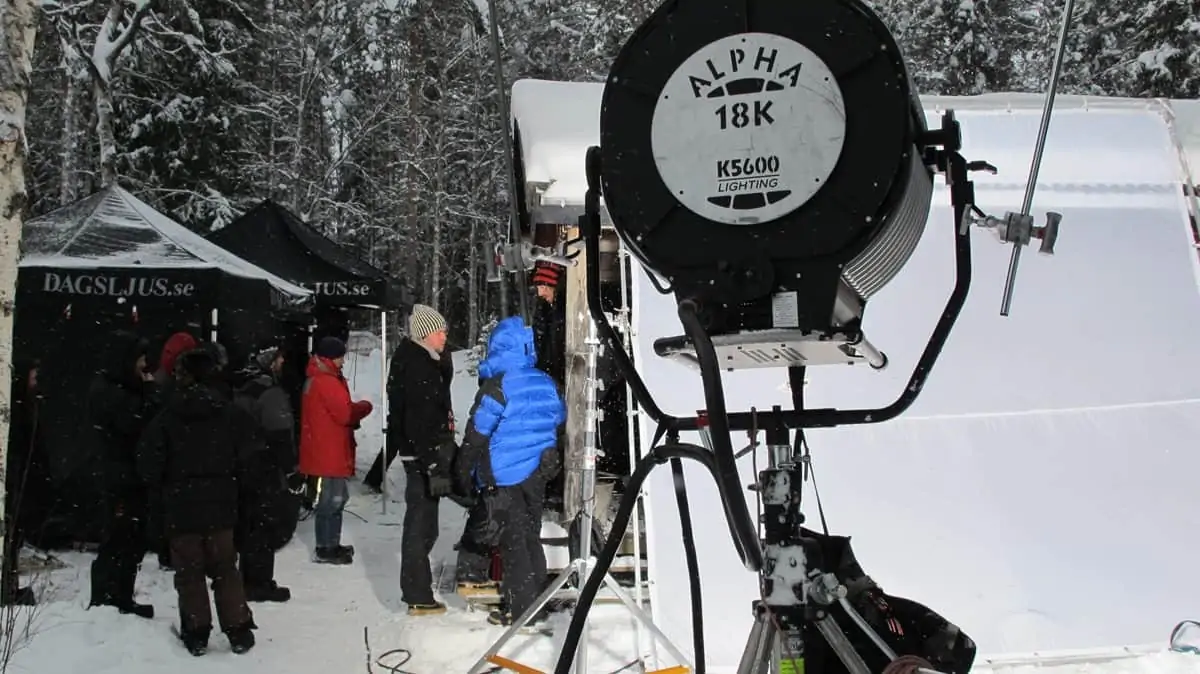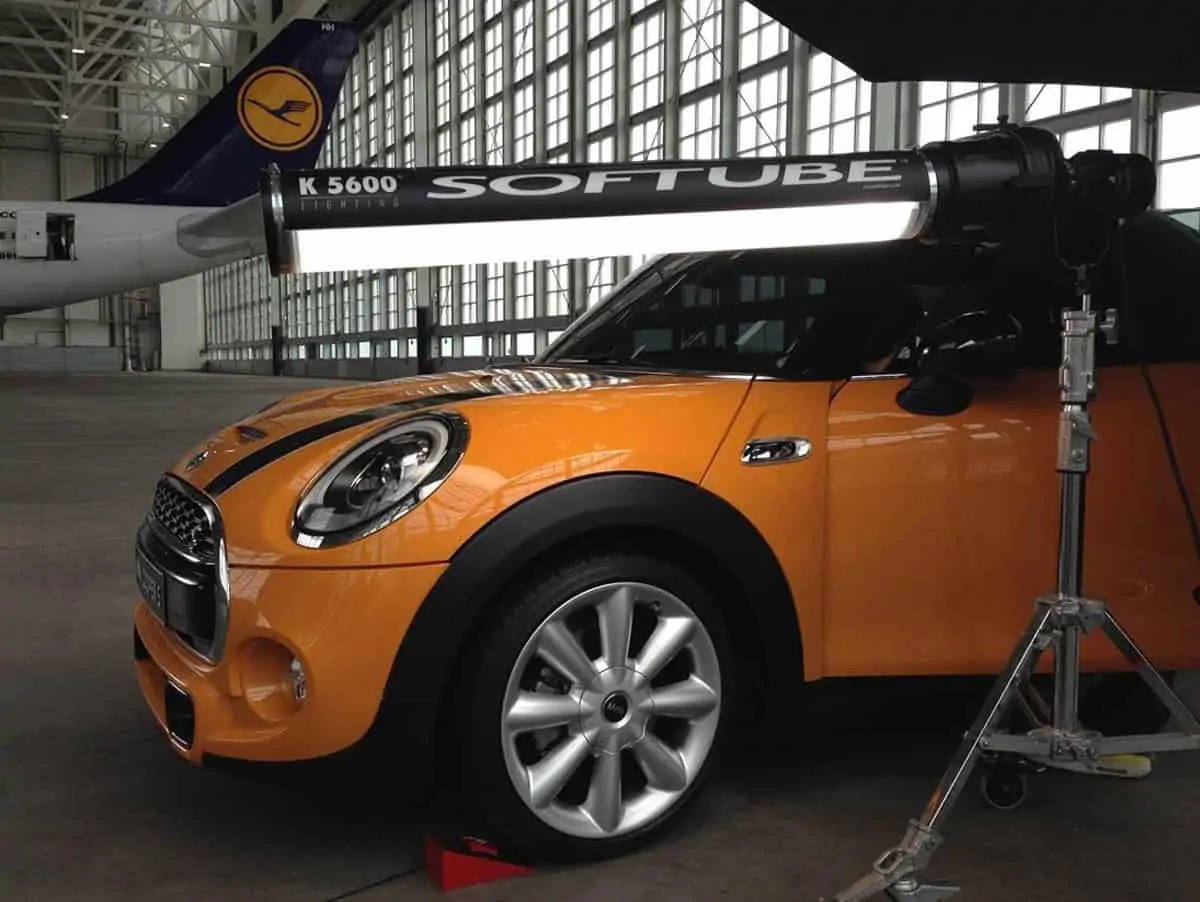Gallic Flare
Spotlight / K5600

Gallic Flare
Spotlight / K5600
BY: Adrian Pennington
HMI lights remain the go-to source on everyone's truck, but changing production demands press DPs, gaffers and best boys to request ever more practical tools that can deliver that same continuous flicker-free daylight output in lighter weight and more flexible form factors.
Lightweight, compact and versatile has been the mantra from HMI lighting specialist K5600 for over two decades, writes Adrian Pennington.
Achieving this balance has been Marc Galerne's goal. “When we began the company 22 years ago we asked ourselves what would lighting needs be like in 20 years time,” the co-founder of K5600 explained. “We could see even then, with the start of cable TV, if not yet the Internet, that there would be a greater demand for more pictures, but that this would be accompanied by lower budgets and shorter production times. With that understanding we began to design all of our units around the concept of lightweight, compactness and versatility.”
Optics and lighting design runs in Galerne's DNA. His father Jean was a director at LTM, the HMI lighting pioneer at which both Marc and brother Gilles learned their trade before branching out as a family in 1992 to form K5600 (the brand nods to the Kelvin 5600 colour temperature that emulates daylight).
Sadly, Jean Galerne was stricken with cancer in 1993 and never saw his company’s success and in 2012 Gilles, who ran the US side of the business, also passed away leaving Marc to carry on the tradition from headquarters in Bouafle (north west of Paris) and Burbank.

The first products from the manufacturer were the Joker 200 and 400 Pars, which featured a specular parabolic reflector and set of lenses and found favour on TV drama and among news crews.
The Galernes followed that with the Bug-Lite, a 400-Watt daylight HMI system which gained popularity in use on booms and for steadicam shots. Before long, K5600 had combined the designs of both products into the Joker-Bug which quickly become the fixture of choice on location for TV drama like CSI, Casualty and 24 and motion pictures from Defiance in the thick of the Lithuanian forest to Skyfall, World War Z, Gravity and chosen by Haris Zambarloukos on the forthcoming Cinderella.
“The aim was always to provide the same firepower and toolset that cinematographers were used to working with but in smaller, more lightweight, more versatile forms and without any compromise on quality,” says Galerne.
A range of accessories complement the Joker-Bug and Alpha (Fresnel) line including Lightbanks, Lanterns and Big Eyes which will turn any Joker-Bug system into a giant focusable Fresnel beauty light.

Another accessory, Softubes, change the narrow concentrated beam of the Par without lens into a linear soft light source, making them ideal for use in confined spaces - hidden behind pillars or inside vehicles to accentuate a window effect.
“They are compact, have great light output, have proved to be reliable and of excellent quality construction and even the sound department likes them, as they are silent!” testified Jaz Castleton, lead DP on Casualty, which in 2010 selected a range of Joker Bugs with soft tubes and Big Eye attachments as part of a package of 60+ K5600 fixtures deployed at the BBC's long running drama's studio base in Cardiff.
“The compactness of the Alphas is a real asset in trucks and on sets,” commends Jose Luis Rodriguez, chief electrician on Woody Allen's Vicky, Cristina, Barcelona. “Without the Fresnel lens the spread is amazing, around 160° with a very even field and a single sharp shadow. The ability to work both 18K and 4K pointing straight down is a major asset where we are requested to work faster and never say: 'this is not possible'.”
Rodrigo Prieto AMC ASC (Brokeback Mountain, The Wolf Of Wall Street) selected Alpha 4 and Alpha 18s for Pedro Almodovar's Broken Embraces: “If weight and size were the only advantages of the Alphas it would have been enough for me, considering the number of stairs we used on this film... but this range of lights has another feature – the possibility of using them straight down. I could light whole scenes with the Alphas suspended, while benefiting from the quality of the sharp shadows and a very large and even spread.”

"The compactness of the Alphas is a real asset in trucks and on sets."
- Jose Luis Rodriguez
DP Rachel Morrison (Fruitvale Station) is a huge fan of the 800-watt Joker Bug with a bug-a-beam adapter in a Leko housing: "Altogether, it packs a mean daylight punch in a controllable spot form that can be plugged into household power or run off a marine cell battery.”
The latest innovation from K5600 is the Evolution kit, a special package consisting of a new Alpha 200W and a Joker Bug 200 Evolution head. This two-light kit is targeted at film schools or any situation where a choice of accessories is possible with both lights.
There is a sea change in lighting requirements impacting the TV industry in particular as new technologies like LED make advances. Broadly speaking though, lighting requirements haven't changed. For outdoors shoots you need daylight-balanced instruments, which is where HMI comes into its own.
“I'm not against LED technology per se, except that it doesn't fit the philosophy of our product range,” says Galerne. “For studio work matters are different, but for locations then HMI has a good future.”

It's rare, he says, for any kind of production to use only one set of technologies, so technicians and cinematographers will always want gear that permits interoperability with a variety of sources for accurate skin tone.
“We hear a lot comparisons between a 200W LED as matching the output of 800W HMI. This is just bad marketing and false information. In our own tests we compared a 200W LED unit to an Alpha 200W Fresnel using the same spread and beam angle. And even then, the Fresnel was more output considering that the LED light needed diffusion to avoid multiple shadows and some Minus Green gel which cuts down light levels by at least a stop.”
As digital cinema cameras finally live up to their promise of using less light without loss of image quality, they are more sensitive than ever to colour rendering or poor quality white light which can be emitted from light sources which are not Full Colour Spectrum.
“In truth there is really only one important piece of information and this is the ability to output the full spectrum,” says Galerne. “Compromise on lighting is just not an option.”



